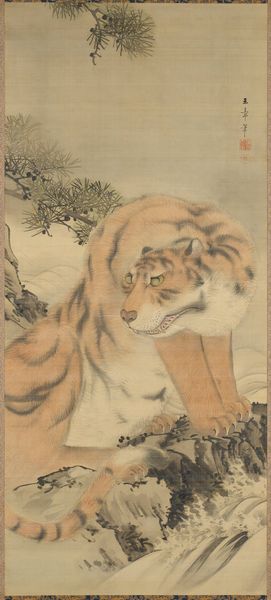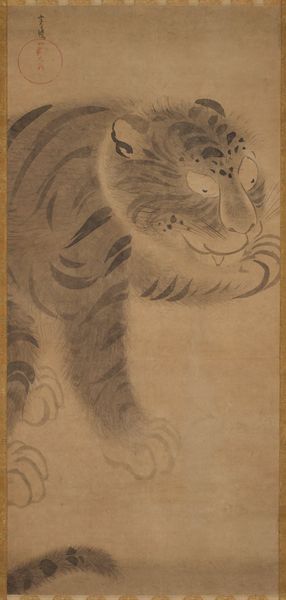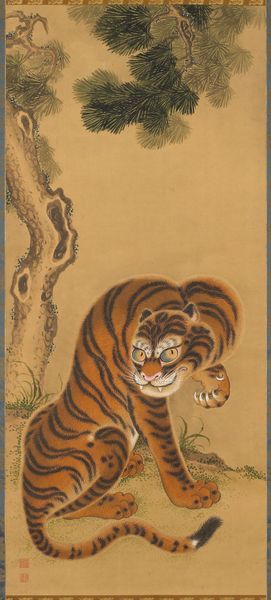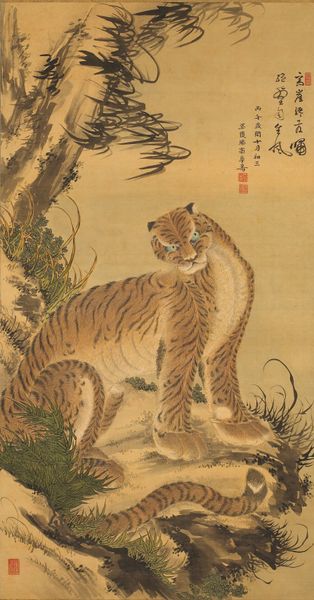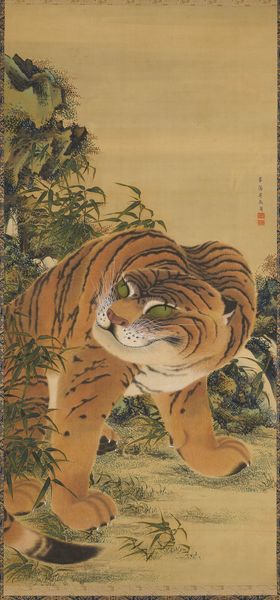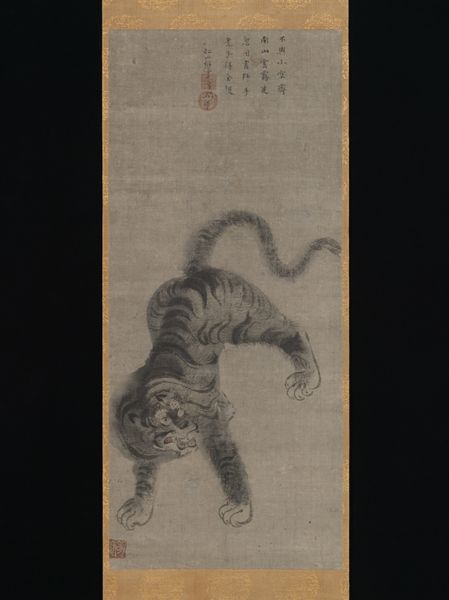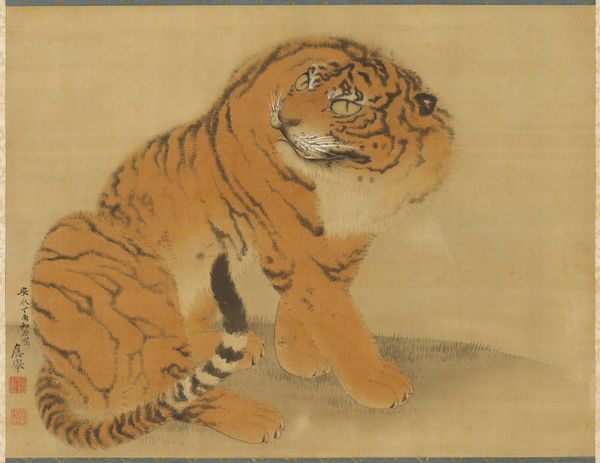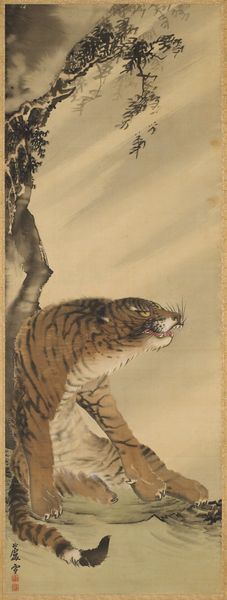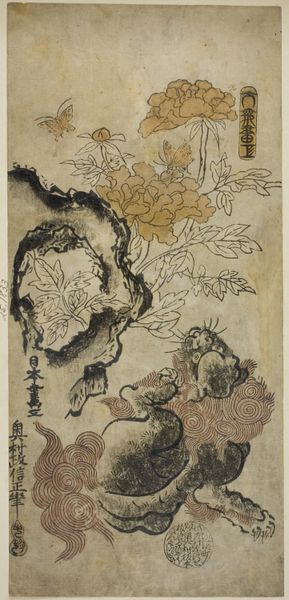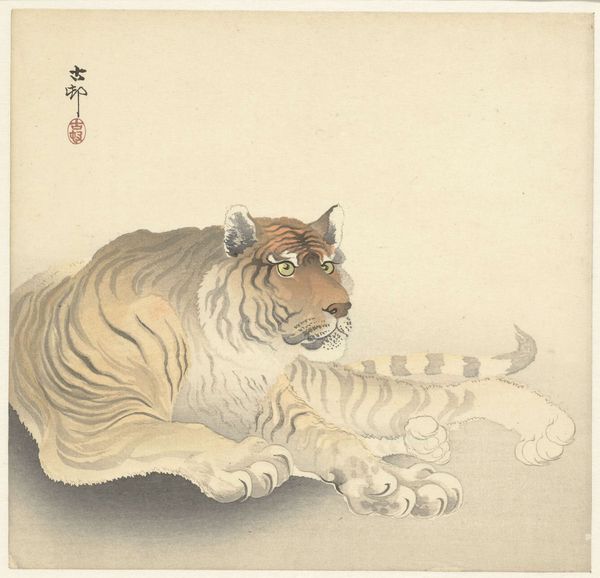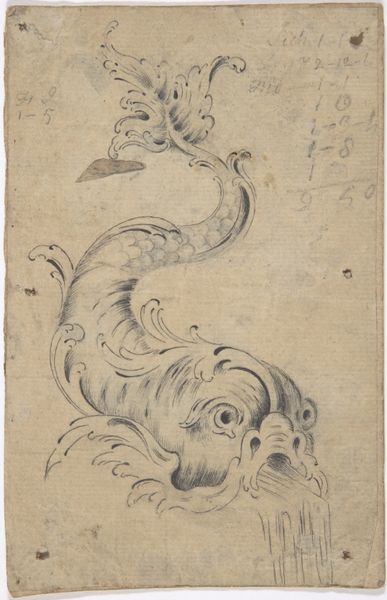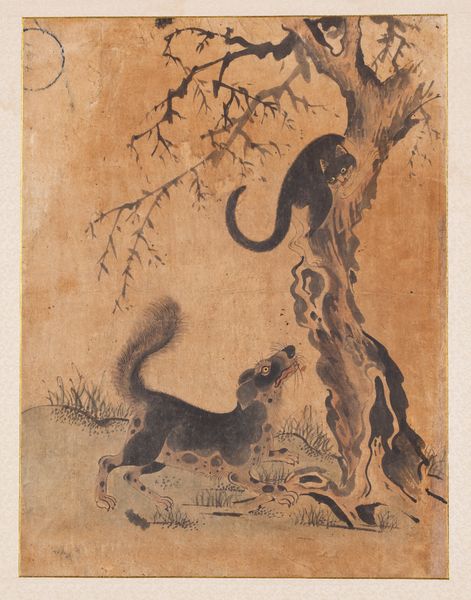
drawing, ink-on-paper, hanging-scroll, ink
#
drawing
#
animal
#
asian-art
#
landscape
#
figuration
#
ink-on-paper
#
hanging-scroll
#
ink
#
pencil drawing
Dimensions: 72 5/8 × 44 3/4 in. (184.47 × 113.67 cm) (image)98 7/8 × 46 in. (251.14 × 116.84 cm) (mount, without roller)
Copyright: Public Domain
Editor: Here we have an ink on paper hanging scroll, "Tigress with Two Cubs," likely from the 17th century, artist unknown, currently residing at the Minneapolis Institute of Art. The tigress looks rather docile and even a bit… cartoonish. What can you tell me about this piece? Curator: Well, you’ve already noted the almost disarming nature of the depiction. Considering the period, one might examine this piece through the lens of symbolic power dynamics. How was the tiger perceived, not just as an animal, but as a symbol of authority and even, at times, benevolent rule within 17th-century social and political structures? Editor: So, it's not just about a tiger, but about what the tiger represents? Curator: Precisely. And who gets to represent it? Who is commissioning or creating such pieces, and for what purpose? Is this an imperial commission meant to project strength? Or is it a piece for a more domestic setting, meant to invoke protection? Note how the surrounding landscape is minimized, focusing attention on the family unit. That compositional choice itself speaks volumes. Editor: It makes me think about who had access to art, too. Was this sort of piece accessible to everyone, or was it more for the elite? Curator: A critical question. Art patronage and collecting were definitely shaped by socio-economic factors. The materials alone—ink and paper, the skill required to create such detail – suggest a degree of privilege. Perhaps we can delve deeper into similar works to see the status attributed to "tigress" imagery across classes? Editor: That gives me a whole new perspective. I’d just seen it as a simple animal portrait, but it is interesting to examine social influence of these art portrayals. Curator: Absolutely. Examining its reception and role in the visual culture of its time provides the more compelling understanding of art, I think.
Comments
minneapolisinstituteofart about 2 years ago
⋮
On a rocky cliffside near the base of an old tree, two tiger cubs play under the watchful eye of their mother. Tigers were a favorite subject for East Asian painters, and Korean paintings of tigers were highly influential in Japan, where painters took Korean examples as their models, especially during and after the 1600s. In fact, this painting itself has a long history in Japan. It has been handed down with a document written in 1863 attributing the painting to Tenshō Shūbun (active c. 1403–50), a highly celebrated medieval Japanese painter to whom many ink paintings in Japan were traditionally attributed. More likely, however, it was created by a Korean artist working in the 1600s before finding its way to Japan, where it remained until recently.
Join the conversation
Join millions of artists and users on Artera today and experience the ultimate creative platform.
